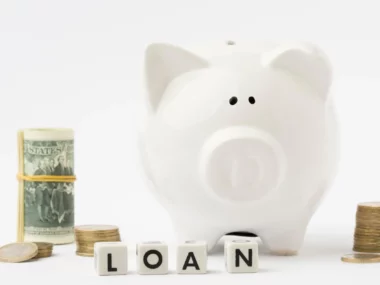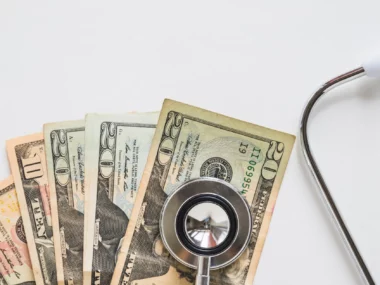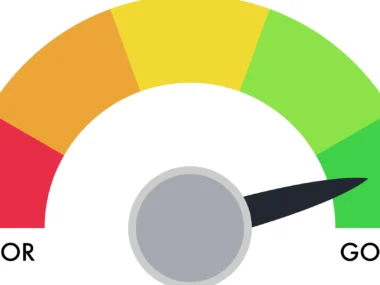Before we answer what is PPP loan in the USA, it is important to state that The COVID-19 pandemic has caused unprecedented challenges and hardships for many small businesses in the United States. To help them survive and recover from the economic crisis, the US federal government launched a special loan program called the PPP loan.
What is a PPP Loan?
The PPP Loan stands for Paycheck Protection Program (PPP) Loan. The PPP is a part of the Coronavirus Aid, Relief, and Economic Security Act (CARES Act) which was signed into law in March 2020.
The PPP provides low-interest, forgivable loans to eligible small businesses, self-employed individuals, sole proprietors, nonprofit organizations, and tribal businesses. The main goal of the PPP is to help these businesses retain their employees and pay for certain operating expenses during the pandemic. The PPP is administered by the Small Business Administration (SBA) with support from the Department of the Treasury and other lenders.
Purposes and Benefits of PPP Loans
One of the most important aspects of PPP loans is that they are designed to support small businesses in maintaining their payroll and keeping their workers employed. This is crucial for the economic recovery and the well-being of millions of Americans who depend on their jobs for income and benefits.
PPP loans can be used to pay for salaries, wages, tips, commissions, bonuses, and other forms of compensation for employees. The PPP loans can also cover the costs of employee benefits such as health care, retirement, and paid leave. By providing these funds, the PPP loans help small businesses avoid layoffs, furloughs, or wage reductions that would otherwise harm their employees and their operations.
Another key feature of PPP loans is that they can also be used to pay for certain overhead expenses that are essential for running a small business. These include rent or mortgage payments, utilities, interest on debt obligations, and other business-related expenses.
By covering these costs, the PPP loans help small businesses stay afloat and continue operating during the pandemic. The PPP loans also offer flexibility and convenience for small businesses, as they can apply through any existing SBA-approved lender or any participating federally insured depository institution, federally insured credit union, or Farm Credit System institution. The PPP loans have favourable terms such as a low-interest rate of 1%, a maturity of two to five years, and no collateral or personal guarantees required.
Statistics on PPP Loans
The PPP loans have been a lifeline for many small businesses across the country. Here are some statistics that show the scale and impact of the program:
- The PPP loans authorized up to $659 billion in funding, divided into two rounds: $349 billion in the first round (April 3 to August 8, 2020) and $310 billion in the second round (January 11 to May 31, 2021).
- The PPP loans helped over 8.5 million small businesses, with more than 11.8 million loans approved by over 5,400 lenders.
- The PPP loans supported an estimated 51 million jobs, accounting for about 80% of small business payroll in the US.
- The PPP loans had an average loan size of around $67,647 for all approved loans and $41,560 for 2021 loans alone.
- Most PPP loans were on the smaller end: 95% of loans were under $150,000, while only 0.40% of borrowers got a loan over $1 million in 2021.
- The PPP loans reached various industries and sectors, with the top recipients being: professional, scientific and technical services; construction; health care and social assistance; accommodation and food services; and manufacturing.
- The PPP loans also targeted underserved and disadvantaged communities, with more than 1.6 million loans worth over $34 billion made by community financial institutions.
- Additionally, more than 27% of 2021 loans went to low- and moderate-income areas.
These statistics show that PPP loans have been a vital source of relief and support for small businesses during the pandemic. However, they also indicate that there is still a need for more assistance and resources for small businesses to recover and thrive in the post-pandemic economy.
Types of PPP Loans
The PPP loans are divided into two types: First Draw and Second Draw. Each type has different eligibility requirements, loan amounts, and loan terms. Here is a brief overview of each type by their differences:
First Draw PPP Loans
Here are the major points to understand about this type of PPP Loan:
- First Draw PPP loans are for businesses that have not received a PPP loan before.
- To qualify for a First Draw PPP loan, a business must have 500 or fewer employees (or meet the SBA’s size standards for its industry), and be in operation on February 15, 2020.
- The maximum loan amount for a First Draw PPP loan is 2.5 times the average monthly payroll costs in the year before the loan or the calendar year, up to $10 million.
- The loan terms for a First Draw PPP loan are 1% interest rate, two to five years maturity, no collateral or personal guarantees required, and no fees charged by the SBA or lenders.
- A First Draw PPP loan can be forgiven if at least 60% of the loan is used for payroll costs and the rest is used for other eligible expenses within the covered period (eight to 24 weeks after loan disbursement).
Second Draw PPP Loans
Here are the major points to understand about this type of PPP Loan:
- Second Draw PPP loans are for businesses that have previously received a First Draw PPP loan and have used or will use the full amount of the loan for authorized purposes.
- To qualify for a Second Draw PPP loan, a business must have 300 or fewer employees (or meet the SBA’s size standards for its industry), and demonstrate at least a 25% reduction in gross receipts in any quarter of 2020 compared to the same quarter in 2019.
- The maximum loan amount for a Second Draw PPP loan is 2.5 times the average monthly payroll costs in the year before the loan or the calendar year, up to $2 million. For businesses in the accommodation and food services sector, the multiplier is 3.5 times the average monthly payroll costs.
- The loan terms for a Second Draw PPP loan are the same as for a First Draw PPP loan: 1% interest rate, two to five years maturity, no collateral or personal guarantees required, and no fees charged by the SBA or lenders.
- A Second Draw PPP loan can also be forgiven if at least 60% of the loan is used for payroll costs and the rest is used for other eligible expenses within the covered period (eight to 24 weeks after loan disbursement).
These are the main differences between the two types of PPP loans. Depending on their situation and needs, small businesses can apply for either type of PPP loan through an SBA-approved lender or any participating federally insured depository institution, federally insured credit union, or Farm Credit System institution.
Examples of Businesses that Qualify for Each Type of PPP Loan
The PPP loans are available for a wide range of small businesses in various industries and sectors. Here are some examples of businesses that qualify for each type of PPP loan:
First Draw PPP Loans
- A restaurant that has 400 employees and was in operation on February 15, 2020.
- A dental office that has 10 employees and was in operation on February 15, 2020.
- A nonprofit organization that has 100 employees and was in operation on February 15, 2020.
- A sole proprietor who operates a landscaping business and was in operation on February 15, 2020.
Second Draw PPP Loans
- A retail store that has 200 employees, received a First Draw PPP loan of $500,000 and experienced a 30% drop in gross receipts in the second quarter of 2020 compared to the second quarter of 2019.
- A hair salon that has 20 employees, received a First Draw PPP loan of $50,000, and experienced a 40% drop in gross receipts in the fourth quarter of 2020 compared to the fourth quarter of 2019.
- A manufacturing company that has 250 employees, received a First Draw PPP loan of $2 million, and experienced a 50% drop in gross receipts in the third quarter of 2020 compared to the third quarter of 2019.
- A hotel that has 150 employees, received a First Draw PPP loan of $1.5 million, and experienced a 60% drop in gross receipts in the first quarter of 2020 compared to the first quarter of 2019.
These are just some examples of businesses that qualify for each type of PPP loan. To find out if your business is eligible and how much you can borrow, you can use the SBA’s PPP loan calculator or contact a lender.😊
PPP Loan Forgiveness
One of the most attractive features of the PPP loans is that they can be forgiven, meaning that the borrowers do not have to repay them if they meet certain conditions. Here is a summary of how PPP loan forgiveness works:
- PPP loan forgiveness is available for borrowers who use the loan for payroll and other eligible expenses, maintain employee and compensation levels, and apply within the deadline.
- Borrowers must use at least 60% of the loan for payroll costs and the rest for other eligible expenses within the covered period (eight to 24 weeks after loan disbursement).
- Borrowers must maintain their employee and compensation levels as required for the First Draw or Second Draw PPP loans, or qualify for one of the safe harbours or exemptions that allow for reductions in these levels without affecting forgiveness.
- Borrowers can apply for PPP loan forgiveness once they have used all the loan proceeds for which they are requesting forgiveness. They can apply any time up to the maturity date of the loan, which is two to five years from loan origination. However, if they do not apply within 10 months after the end of the covered period, they will have to start making loan payments.
- Borrowers must submit a forgiveness application form and provide documentation to support their calculations and eligibility. They can submit the form either through the SBA’s direct forgiveness portal if their lender is participating in it, or through their lender’s website or platform if their lender is not participating in it.
- The SBA will review the forgiveness application and decide within 90 days of receiving it. The SBA may approve the full amount, a partial amount, or none of the amount requested by the borrower. The SBA may also request additional information or documents from the borrower or the lender as part of the review process.
- If the SBA approves the forgiveness amount, it will remit it to the lender, and the lender will notify the borrower. If the SBA denies the forgiveness amount, it will notify the lender, and the lender will notify the borrower. The borrower can request a review of the SBA’s decision within 30 days of receiving it.
Conclusion
The PPP loans are a valuable resource for small businesses that have been affected by the COVID-19 pandemic. They offer low-interest, forgivable loans that can help small businesses keep their employees and pay for their essential expenses. However, to take advantage of this opportunity, small businesses need to understand the different types of PPP loans, the eligibility requirements, the forgiveness process, and the application procedures.
By following the guidance and tips provided in this blog post, small businesses can maximize their chances of getting and using PPP loans effectively and efficiently. If you have any questions or need any assistance with your PPP loan application or forgiveness, please contact us today. We are here to help you navigate this challenging time and support your small business goals.






